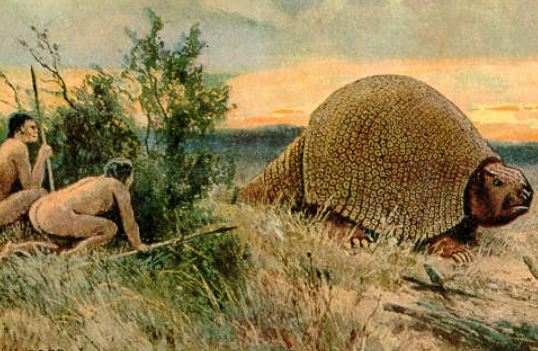Paleo-Indians

Paleo-Indians, Paleoindians or Paleo-Americans, were the first peoples who entered, and subsequently inhabited, the Americas during the final glacial episodes of the late Pleistocene period. The prefix “paleo-” comes from the Greek adjective palaios (παλαιός), meaning “old” or “ancient”. The term “Paleo-Indians” applies specifically to the lithic period in the Western Hemisphere and is distinct from the term “Paleolithic”.
Traditional theories suggest that big-animal hunters crossed the Bering Strait from North Asia into the Americas over a land bridge (Beringia). This bridge existed from 45,000 to 12,000 BCE (47,000–14,000 BP).[2] Small isolated groups of hunter-gatherers migrated alongside herds of large herbivores far into Alaska. From c. 16,500 – c. 13,500 BCE (c. 18,500 – c. 15,500 BP), ice-free corridors developed along the Pacific coast and valleys of North America.[3] This allowed animals, followed by humans, to migrate south into the interior of the continent. The people went on foot or used boats along the coastline. The precise dates and routes of the peopling of the Americas remain subjects of ongoing debate.[4] At least two morphologically different Paleo-Indian populations were coexisting in different geographical areas of Mexico 10,000 years ago
